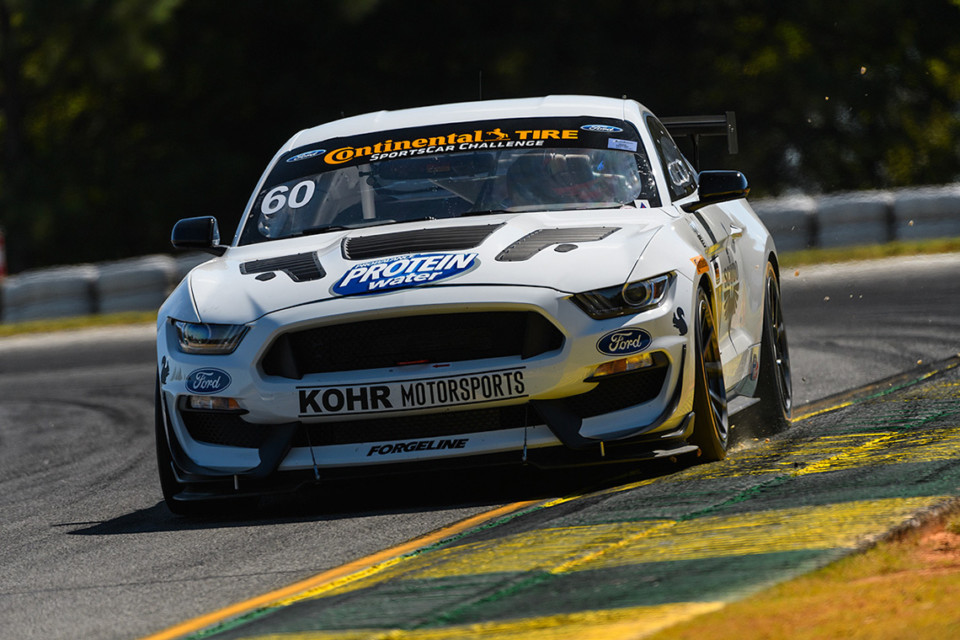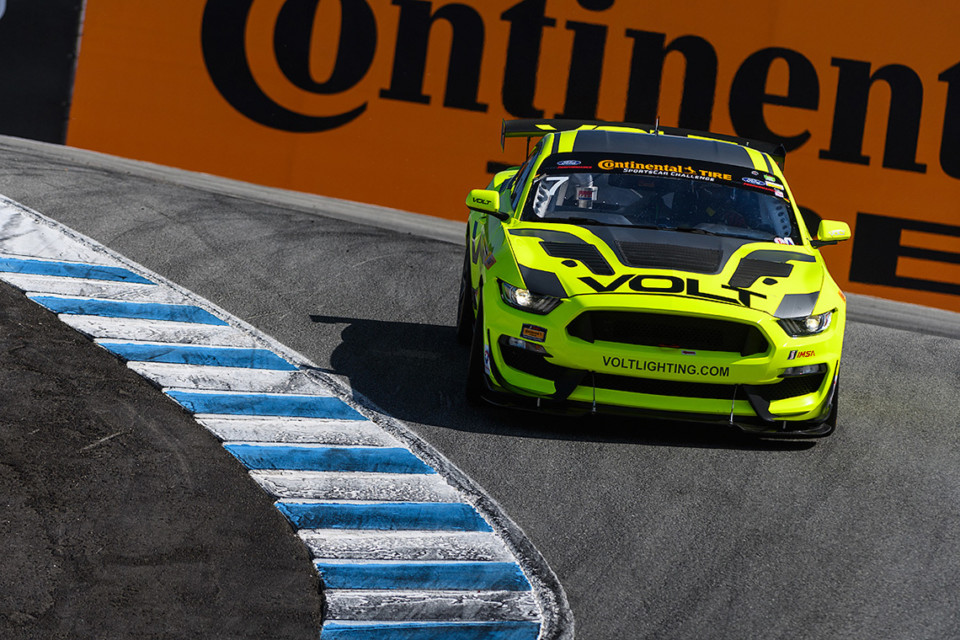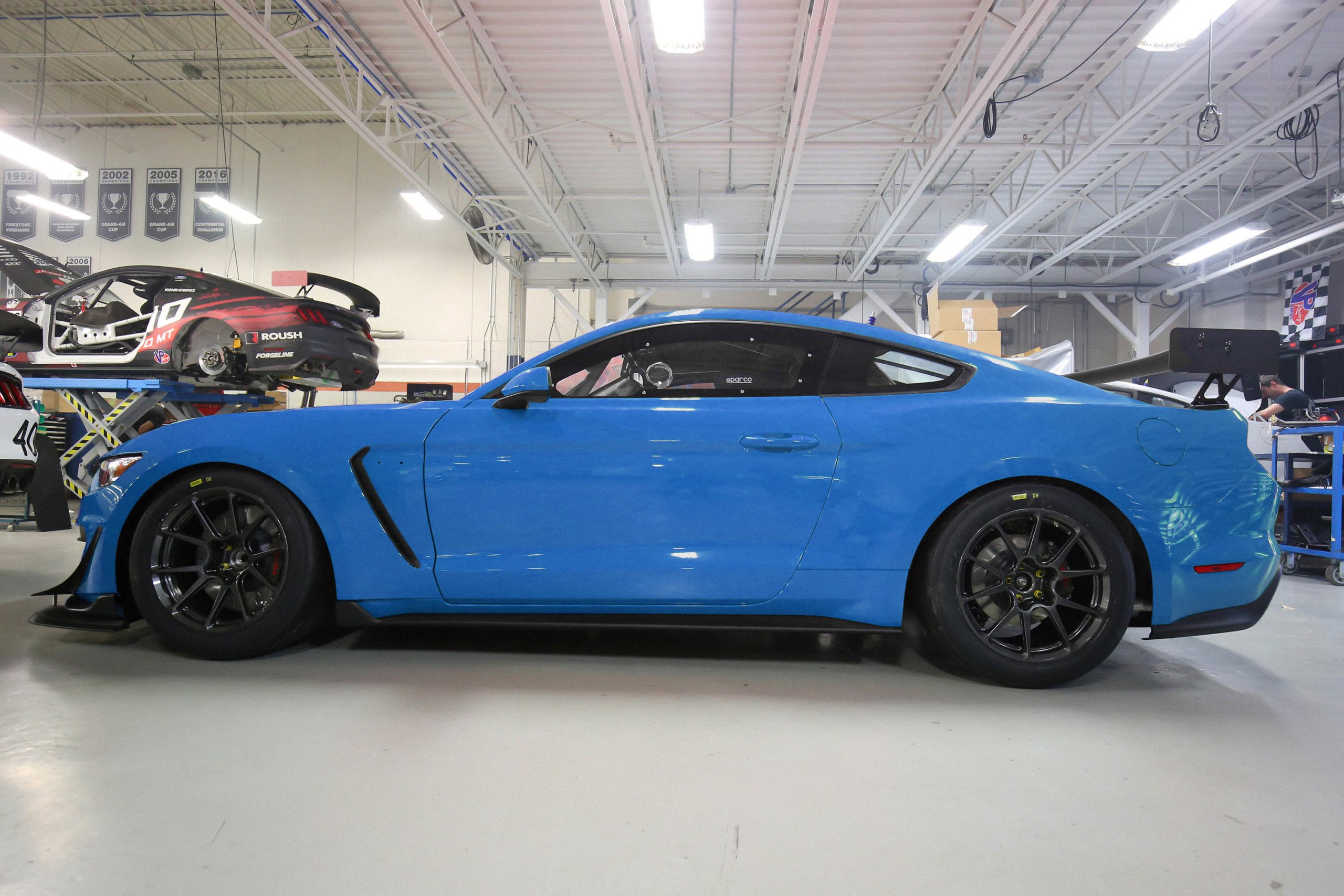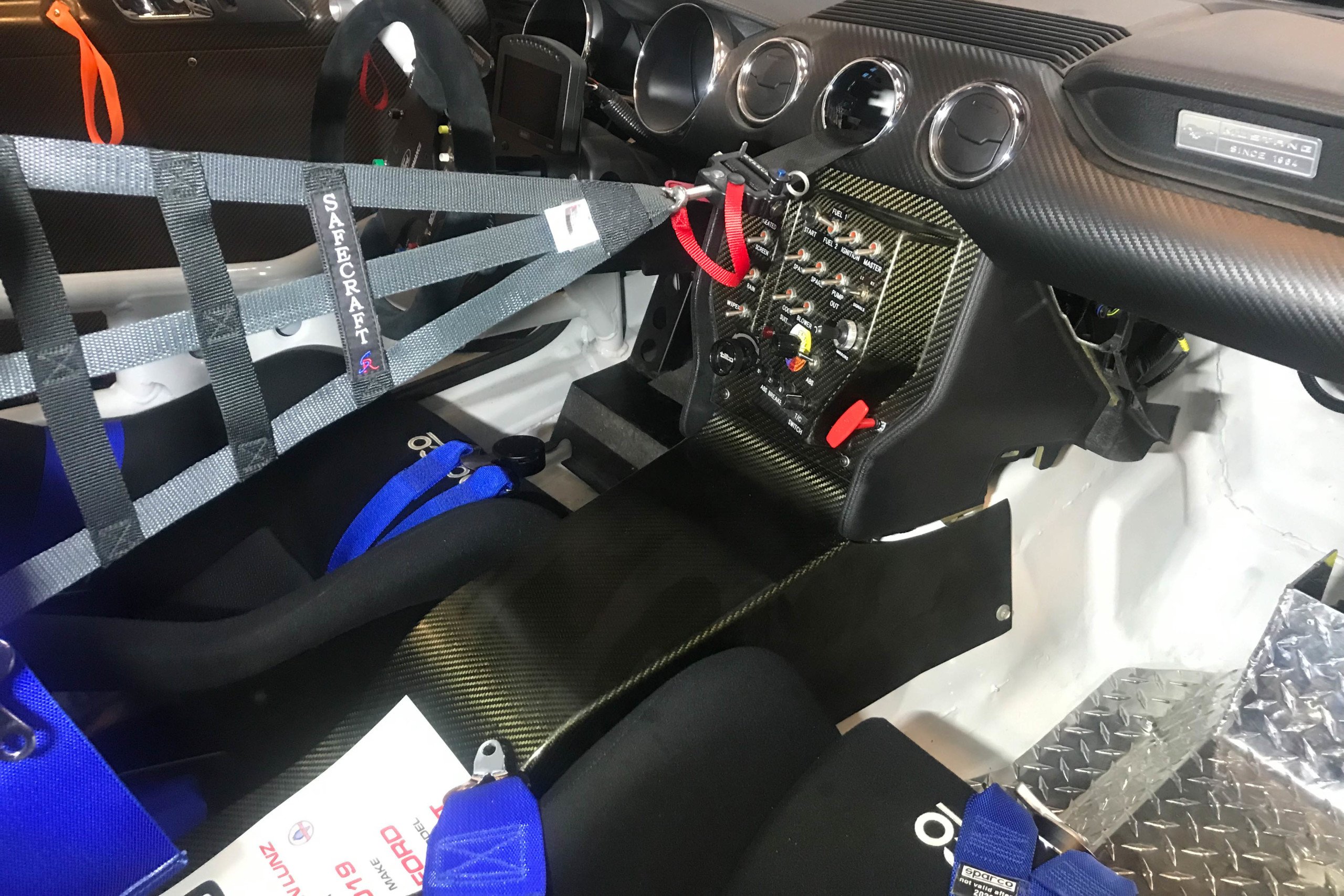Though an ardent follower of the Ford GT40s and their successors, Jim Lunz only developed a fascination with the track-oriented Mustangs in the last couple decades. After watching a Grand-Am race in which Billy Johnson put on an inspiring performance in an FR500C, Lunz wrote a check the following Monday for his first track-focused Mustang. This would be the starting point leading to the purchase of a Ford Mustang GT4.
The FR500C had the right combination of traits to make regular track days a cinch. No elaborate starting procedures, sufficient power, and a forgiving chassis gave Lunz the reassurance needed to run regular laps around his favorite tracks. After eight years running track days, he craved something a little quicker, so he added a 302R to his collection. But once the novelty had worn off of the 302R, Lunz started searching for something a few steps above what he had experienced. It just so happened that Ford released something for worldwide GT4 competition, and these cars were much more purpose-built race car than modified production car.
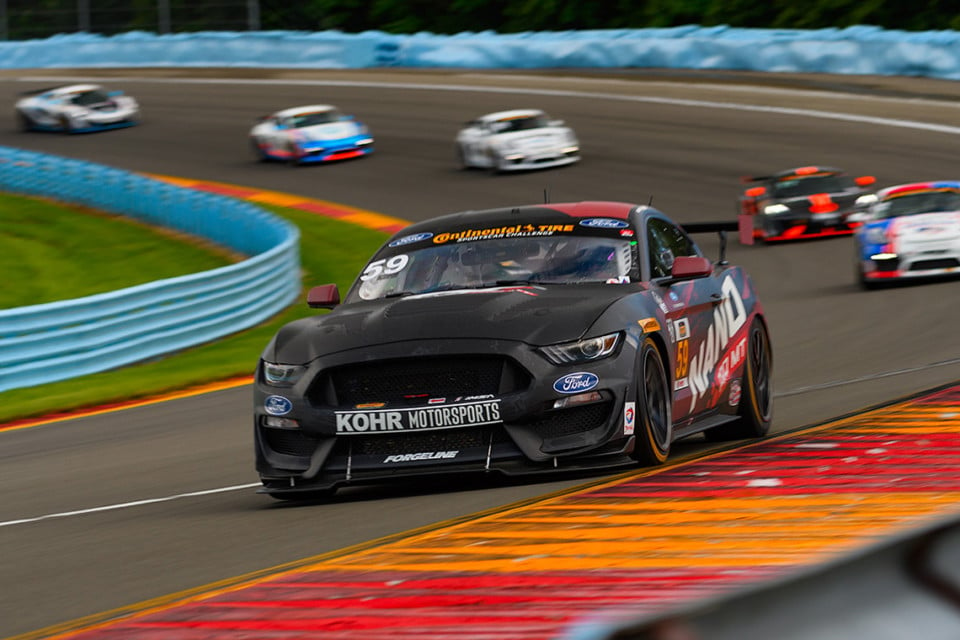
Leading the pack. The Mustang GT4 does more than just compete, it does quite well against its european rivals and for a much better price range.
In the five years the Mustang GT4 has been on the market, it has become a regular sight at GT4 races, mainly for its speed and operating costs. Based on a Shelby GT350R-C, the GT4 already has the independent rear suspension that defined the sophisticated S550, but Multimatic recognized that to be competitive in global GT4 racing it would have to take vast steps forward in every department.
Built To A Serious Standard
Multimatic starts with a fully seam-welded steel unibody, and then adds a high-tensile-strength steel safety cage before putting the GT4 on a carbon-diet. The doors, decklid, roof, hood, rear wing, splitter, and undertray are fashioned from the woven carbon, and though the weight depends on the specific series it competes in, it hovers around 3,400-pounds.
As that figure makes the Mustang GT4 a middleweight in a world of increasingly tubby race cars, one would assume it would be powered by an exotic motor, but that’s not the case. Customer racing requires peak power to take a back seat to reliability, so the GT4 is powered by a 5.2-liter crossplane V8. It’s not that the crossplane is necessarily sturdier than the flatplane engine in the Shelby, but it’s that such an exotic engine was not needed to achieve the modest amount of power allowed by the GT4 Balance of Power rules.
Although it doesn’t scream quite like the flatplane V8 does, this variant is very interesting. The Roush Yates dry-sumped engine makes around 580 horsepower, but due to the aforementioned Balance of Power keeping GT4 cars close, maximum power is limited to around 450. To work within those rules and capitalize on the V8’s displacement advantage, Roush-Yates fitted a different intake manifold and calibrated this engine to produce more torque across the powerband that begins a few hash marks past idle.
Though this restricted engine might suggest the Mustang is on the mild side, it is not. Actually, the Mustang GT4 boasts some race tech that elevates it above its competitors. It begins with the gearbox. Unlike many of the cars it competes against, the Mustang sports a true racing transmission: a Holinger RD-6 sequential with straight-cut gears. The transmission is noisy and violent, and requires some clutch work when starting and stopping. However, the six-speed sequential weighs less than the modified street car transmissions used in the Porsches and Audis.
That racing driveline, brought together with a one-piece aluminum driveshaft, invites an encouraging amount of noise into the cabin. The engagement of first gear is signaled by an audible clack, and every upshift under load sends a shock through the car. While the transmission comes off hostile, the car is actually fairly benign. A soft balance, a long throttle travel, an electric power steering system calibrated to the car, and an adjustable traction control system all make the Mustang quite approachable. On top of all these aids, it is stabilized by a massive aero kit that makes it accessible to the numerous gentlemen who drive it.
Underneath the 18×11-inch Forgeline GS1R aluminum wheels is a Brembo big brake kit with six-piston calipers and 380mm slotted rotors up front and four-piston calipers with 313mm slotted rotors at the rear. Combined with Performance Friction brake pads and custom carbon-fiber brake ducts, the braking system does not fade fast. More importantly, they inspire confidence. Bosch M4 ABS brings the brake package together. It also sets the Mustang apart from its peers, most of which use a modified OE ABS.
Though the car is refined and laden with various types of driving assistance, one can’t help but wonder if such a heavy car with stump-pulling torque would be kind to its tires. However, the car was designed with downforce and suspension geometry that stabilizes it so well that it actually manages to make the tires last longer than the competition.
Aside from less-than-stellar visibility and the unfortunate weight handicap it carries, there doesn’t seem to be any major flaws with this cleverly designed race car. However, that doesn’t necessarily make it a great purchase for an enthusiast without a full team’s support behind them. Does a car like this suit the discerning weekend warrior?
Taking Delivery Casually
The short answer is yes.
When Lunz put in an order for the then-new Mustang GT4, he expected to be at the bottom of a long list. Being that this was a genuine race car, he also expected it to come with a list of snags, but the proposed performance was worth taking a risk. It turned out that word hadn’t yet spread. The Mustang GT4 didn’t have many buyers at that stage. True, it was more expensive than the prior two track Mustangs were, but the lack of demand meant that he was able to sign for car #003.
However, word travels fast, and when a time-strapped professional team tried to buy that particular car out from under him, Lunz didn’t put up much of a fight. He wasn’t being passive, nor was he being generous, though. He wasn’t pleased to be asked to wait, but he saw this situation as a possible bargaining chip.
As Lunz likes to scare friends and family in his cars, he requested Multimatic install a second Sparco seat in the cramped cabin. Normally, the ECU and electronics are mounted in the passenger’s area, and it seemed like an impossible request to fulfill. Lunz stood his ground, and after several days of back and forth, his loyalty to the Blue Oval unflinching, Multimatic acquiesced and agreed to build him a two-seater Mustang GT4, doused in a coat of Grabber Blue.
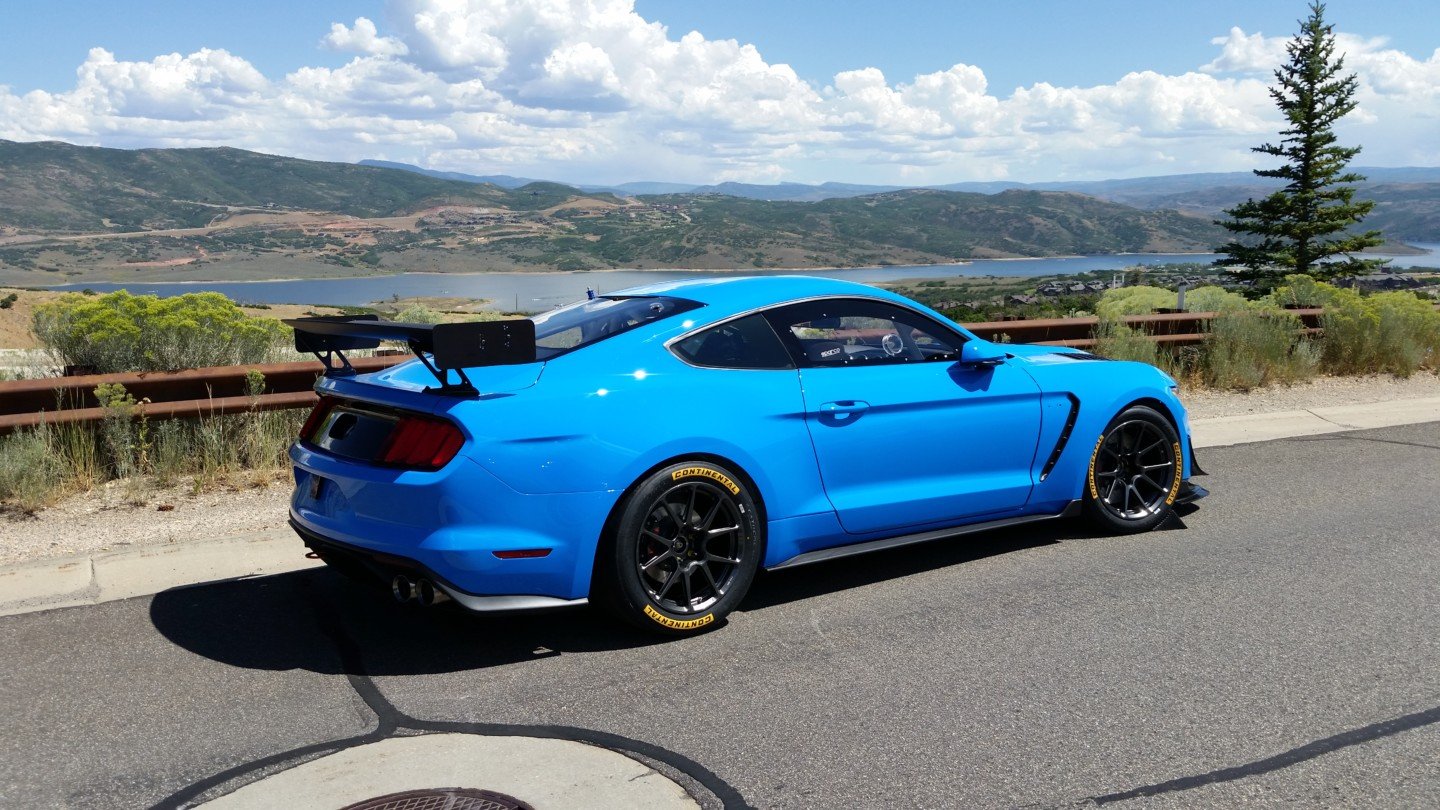
Lunz’s personal Ford Mustang GT4 is coated in Grabber Blue paint and even has a passenger seat installed.
Lunz made the 900-mile trek from Seattle to Utah Motorsports Campus to collect his new toy. During its shakedown, a malfunctioning power steering meant he could run just a few laps before his arms got too tired to steer. But that wasn’t going to stop his fun. Multimatic treats its clientele well, and flew someone out that evening to fix the steering.
Though a leap onward from the Mustangs which preceded it, Lunz has been able to acclimate himself to the car fairly quickly—it only took a few track days before he felt truly comfortable behind the wheel. Some of that has to do with the fact that it’s made for casual lapping; no engineers or team of specialists are needed to turn laps. As long as his son is there to help with refuels and tire checks, it’s as easy as unloading a trailer and strapping in.
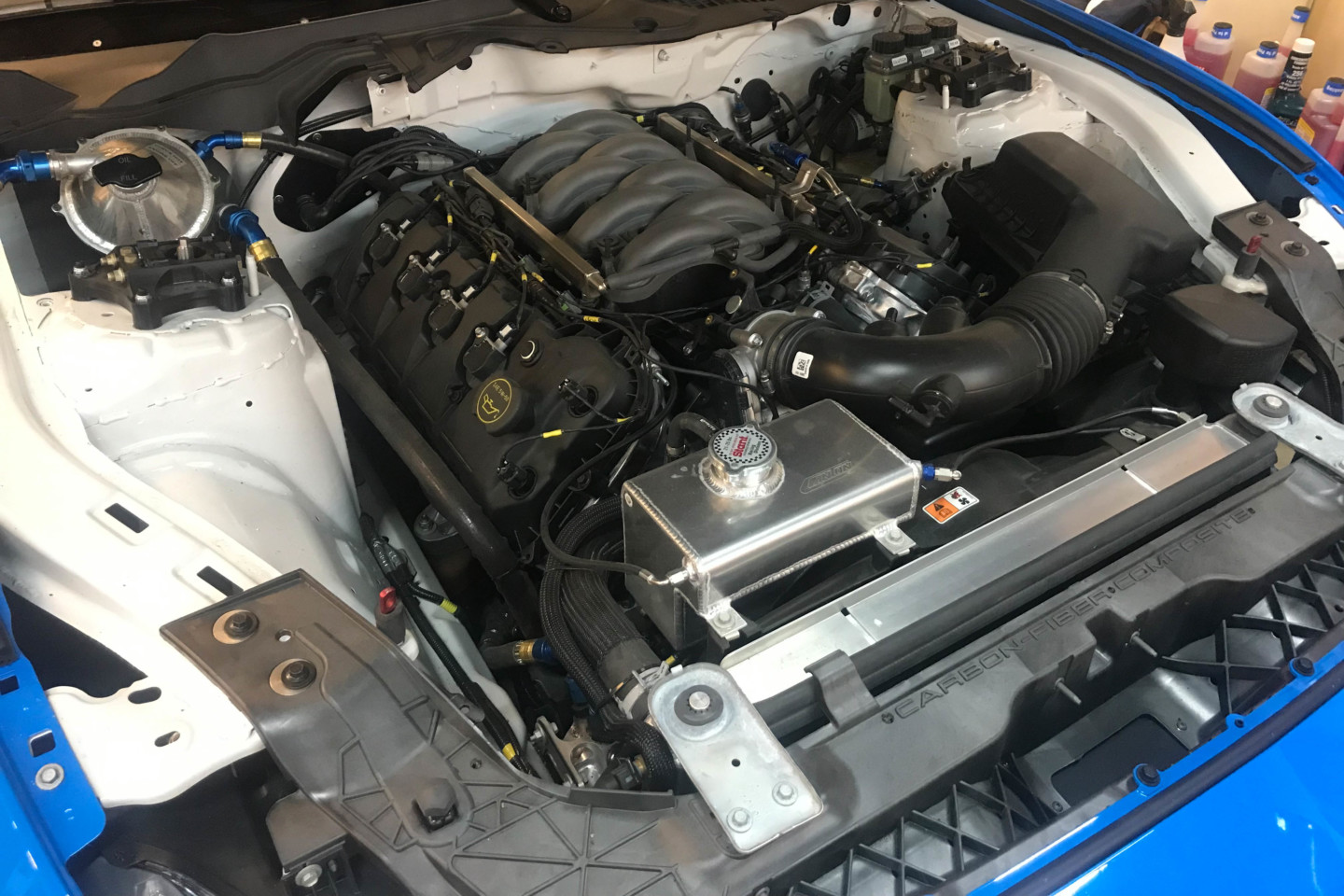
A simple engine bay for such a high-end race class. The Mustang GT4 was designed around the ability to still work on the engine without the complications and obstructions found in other engine bays.
Some people might assume that a big, heavy Mustang wouldn’t turn well, but this GT4 has more grip than grunt, though it wouldn’t be fair to call it a momentum car. If all the clichés about pony cars could be disproven with one machine, this might be it. Actually, this is definitely the one.
While the name GT4 namesake might push away the relaxed hobbyist, Lunz’s experience with the GT4 is proof positive that notion is false. For all the preconceived notions which seem to follow Mustangs around, none of them actually stick with the GT4. Well balanced, predictable, agreeable, decent to its tires, and grippier than some Porsches, the GT4 is without a doubt an engineering marvel. The fact that it’s gone on to win in many different hands is testament to that.
Lunz's beautiful Mustang GT4 showcases what dreams are made of. The additional seat allows passengers to enjoy the fun of an open track day. The grabber blue draws attention from all angles.

